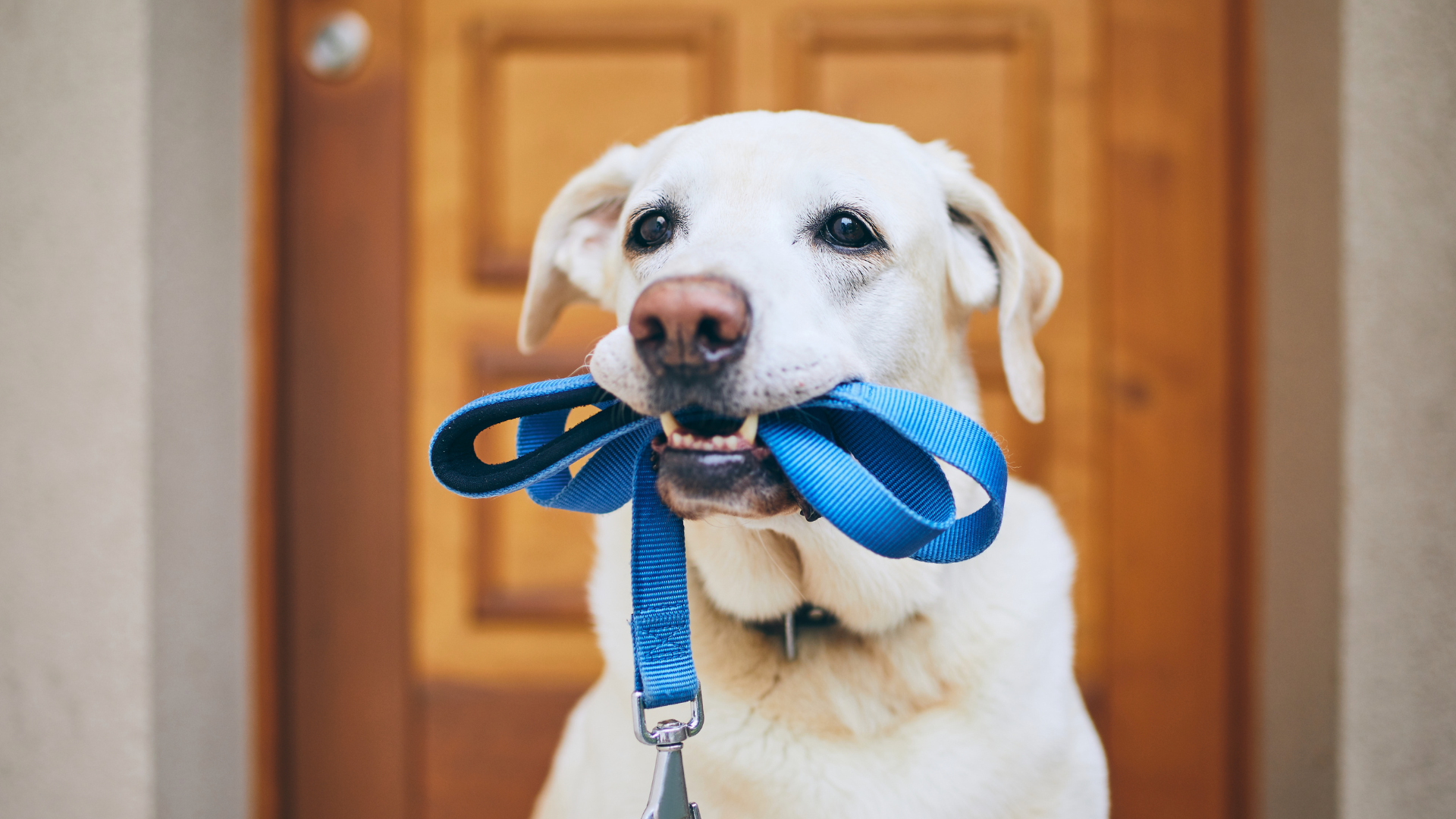
How Often Should You Walk Your Dog? Benefits, Risks & Expert Tips
Walking your dog is one of the most important things you can do for their physical health, mental well-being, and overall happiness. But how often should you walk your dog? And what happens if they don’t get enough exercise?
This comprehensive guide covers:
- How often your dog needs to be walked (based on breed & age)
- The benefits of regular walks
- The risks of insufficient exercise
- Tips for walking in different weather conditions
How Often Should You Walk Your Dog?
The ideal frequency and duration of dog walks depend on breed, age, and energy levels.
| Dog Type | Walk Frequency | Total Daily Walk Duration |
| High-energy breeds | 2+ walks/day | 1–2 hours minimum |
| Moderate-energy breeds | 1–2 walks/day | 30–60 minutes |
| Low-energy breeds | 1–2 short walks | 20–40 minutes |
| Puppies | Multiple short walks | 5 min/month of age per walk |
| Senior dogs | 1–2 short walks | 15–45 minutes, based on health |

Walking by Breed & Energy Level
- High-Energy Breeds (60–120 minutes/day) – Border Collies, Huskies, Retrievers, Jack Russell Terriers. These dogs need multiple walks, running, and playtime to stay happy!
- Moderate-Energy Breeds (30–60 minutes/day) – Beagles, Poodles, German Shepherds, Cocker Spaniels. A couple of daily walks and interactive play keep them balanced.
- Low-Energy Breeds (20–40 minutes/day) – Bulldogs, Basset Hounds, Great Danes, Shih Tzus. These pups enjoy short, easygoing strolls and relaxed indoor play.
Walking by Age
- Puppies (Under 1 Year Old) – Short, frequent walks (5 min per month of age). Example: A 4-month-old puppy = 20-minute walks.
- Adult Dogs (1–7 Years Old) – Follow breed-specific exercise needs.
- Senior Dogs (7+ Years Old) – Shorter, slower walks (15–45 minutes total). Keep them gentle but consistent to prevent stiffness.

Benefits of Walking Your Dog
Regular walks keep your dog happy, healthy, and well-behaved!
1. Physical Health & Weight Management
- Prevents obesity, diabetes, & heart disease
- Supports joint & muscle health
- Keeps their metabolism active
2. Mental Stimulation & Preventing Boredom
- Dogs experience the world through their nose—walking is their version of reading a book!
- Reduces destructive behaviors like chewing & excessive barking
3. Behavioral Benefits & Reducing Anxiety
- Helps prevent hyperactivity, aggression & excessive barking
- Alleviates separation anxiety by releasing pent-up energy
4. Strengthening Your Bond
- Walks create trust & connection between you and your dog
5. Socialization & Confidence Building
- Helps your dog get comfortable around other dogs, people, and new environments
- Reduces fearfulness & improves overall behavior
6. Supports Digestive & Joint Health
- Encourages regular digestion & prevents constipation
- Keeps joints flexible & reduces stiffness, especially in senior dogs
The Risks of Not Walking Your Dog Enough
Not getting enough walks can cause serious health & behavioral problems, including:
- Obesity & health issues (diabetes, arthritis, heart disease)
- Boredom & destructive behavior (chewing, digging, excessive barking)
- Hyperactivity & restlessness (jumping, pulling on the leash)
- Anxiety, stress & depression (pacing, whining, aggression)
- Weak muscles & joint stiffness (especially in older dogs)
- Poor social skills & fearfulness (reactivity toward other dogs & people)

Walking in Different Weather Conditions
Hot Weather (80°F+/27°C+)
- Walk early morning or late evening
- Avoid asphalt—hot pavement can burn paws!
- Bring water & take breaks in the shade
Cold Weather (Below 32°F/0°C)
- Short-haired dogs may need coats or sweaters
- Watch for icy paths & salt exposure on paws
- Keep walks short for small or senior dogs
Rainy or Windy Days
- Some dogs dislike rain—try a dog raincoat!
- Keep walks short but supplement with indoor play
Fun Ways to Make Walks More Engaging!
- Let them sniff! Sniffing is mentally stimulating for dogs.
- Change up your route—keep it exciting!
- Bring a toy—play fetch or tug after your walk.
- Try a “sniffari”—let your dog choose the direction for part of the walk!
- Use training commands—practice “sit,” “stay,” or “heel” while walking.

Final Thoughts: Why Walking Your Dog Matters
A well-walked dog is a happy dog! Daily walks don’t just provide exercise—they support your dog’s mental well-being, improve behavior, and strengthen your bond together. Most dogs need at least two walks per day, with duration adjusted based on their breed, age, and energy level. Skipping walks can lead to obesity, anxiety, and destructive behaviors—so it’s important to stay consistent.
But we get it—life gets busy.
That’s where a professional dog walker can make a real difference. Whether you’re juggling work, travel, or a packed schedule, hiring a trusted pet care provider ensures your pup gets the activity and attention they need. Routine walks with a familiar face help reduce stress, maintain good health, and give your dog something to look forward to each day.
At The Savvy Sitter, our experienced team is here to support your dog’s daily routine—even when you’re not home. We’ll keep those tails wagging and paws moving so your dog stays active, happy, and well-loved. 🐾
So, grab that leash—or let us do it for you—and give your pup the gift of a fulfilling walk today!
About the Author:
Savanna Westwood
Savanna Westwood is the Owner and Founder of The Savvy Sitter, Pet Sitting and Dog Walking, LLC. She has grown up with animals all her life and enjoys spending time with them. Savanna has lived in the Winter Garden and Windermere Area for over 30 years. When she is not taking care of Fur Friends, one can find her reading, practicing archery, riding, and devising ways to provide additional and excellent services to clients. Savanna is a Certified Professional Pet Sitter with Pet Sitter International's CPPS certification and also holds certification in Pet First Aid and CPCR for Pet-Care Professionals.

